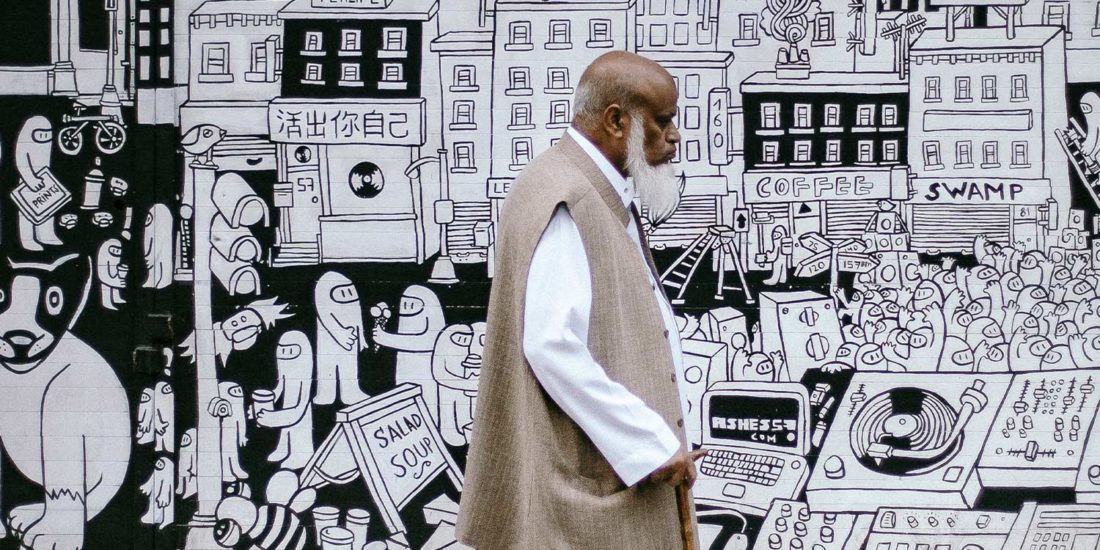Dear Readers,
As humanity is approaching its third year under COVID-19, the virus’s grim day-to-day toll is becoming increasingly clear. By the end of 2021, over 5 million people will have died from the disease and many are continuing to die on a daily basis. The world has not even yet begun to count the psychological fallout from the disease, as only glimpses of it have become visible so far: children left behind in their schooling, depression among teenagers unable to socialise; students prevented from having campus experiences; parents at the end of their tethers because of closed schools and kindergartens; family members unable to see each other for years on end. Among survivors, “fatigue” is the most common words to be heard.
Other words, unknown a few months ago, have become pedestrian, as we are all becoming (linguistic) epidemiologists: Delta and Omicron mutations, booster vaccinations, 2G, 3G, 3G++. The advantages and disadvantages of heterologous and homologous vaccinations, of mRNA vaccines vs adenovirus vector vaccines versus inactivated virus vaccines are broadly discussed. Additionally, rules and regulations change on a daily basis, and travel plans are more a guessing game than anything else. Under the reign of social media, discussions taking place oftentimes become heated and accusatory, rather than reflected and scientific. As the former spill out onto the streets, people are injured and killed. The virus is political.
Journal Articles
IJCS’s current issue pays a small tribute to this situation; in a larger expose, entitled “Screen Ontologies or Teaching the Virus a Lesson: A Few Things that Work in Online Education and a Few that Don’t”, the situation of accelerated online education is discussed. The article states that despite the fact that there were few alternatives to such online teaching, its necessity at the time should not supress necessary criticism of distance education in general. In particular, the teaching situation via screens is discussed and older philosophical and social criticisms of television culture and reintroduced and updated in order to expose the limits of screen education in particular and screen cultures in general. Finally, new ways of distance education are sketched that would usher in a post-screen education model.
https://doi.org/10.22492/ijcs.6.2.01
Note: Every effort was made to minimise any bias in the review process of this paper. Another editor, Dr Joseph Haldane, handled the double-blind peer review procedure independently of the editor and author of this paper.
The second article, “Is There a Correspondence Between “Orientalism” and The Orient? – Said, Dyson and Sen” by Amitabha Gupta, revisits Edward Said’s seminal Orientalism work and, from the vantage point of 40 years after, explains how especially the work of Sen is able to provide a more fruitful approach today by circumventing some of the by now problematic premises Said relied on
https://doi.org/10.22492/ijcs.6.2.02
Naeim Sepehri’s “Psychological Effects of the Architectural-Space: Decorated Mirror-tile Artwork-A Phenomenological Approach”, discusses the usage of mirror shards in the interior decoration of palaces and mosques in Iran. He historicises this architectural feature and, with the help of recent psychological theories, demonstrates how such architectural approaches have become deeply engrained in the aesthetic of Iranian historical national narratives.
https://doi.org/10.22492/ijcs.6.2.03
“Innovation in Cultural Heritage Preservation in Taiwan: Lessons for Indonesia?” by Riela Provi Drianda, Laila Zohrah and Adiwan Fahlan Aritenang contrasts and compares cultural heritage politics and their implementation in Taiwan and Indonesia respectively. While the two cultural communities follow divergent politics of heritage conservation, the authors illustrate that many of the challenges faced by cultural heritage preservation actions, such as rapid development, profit maximisation, lack of political will and funding, and a host of others, are common to preservation efforts around the globe. Preservationists can learn from each other’s experiences, and while local givens, such as weather conditions, might differ, all preservation efforts share a number of commonalities which can best be explored together.
https://doi.org/10.22492/ijcs.6.2.04
Finally, Xiaolong Zhang’s “Media Power: Cigarette Package Design in China” explores the conflicting messages cigarette package design is sending: On the one hand, as in many other countries, the cigarette pack is supposed to alert its users that smoking kills; on the other, it is supposed to attract users to exactly this habit. Zhang traces this conflict to the differing political and economic messages being sent by the authorities. For one, tax revenues from cigarettes are an import economic factor, as are jobs in the tobacco industry; for another, the long term costs of smokers’ health-care costs have recently begun to be higher than tobacco’s economic benefits. Up to here, the Chinese situation does not seem to be so much different from the rest of the world. But Zhang shows that in China there is a strong cultural element at play that is different from other countries, and that is the social component of smoking. Via focus groups, Zhang demonstrates that smoking is variably used to exhibit status, masculinity and relational sociability. It is these features that make anti-smoking campaigns even harder to run in China than elsewhere.
https://doi.org/10.22492/ijcs.6.2.05
Happy reading, please stay healthy and enjoy this issue of the IAFOR Journal of Cultural Studies!
Holger Briel
Editor-in-Chief

